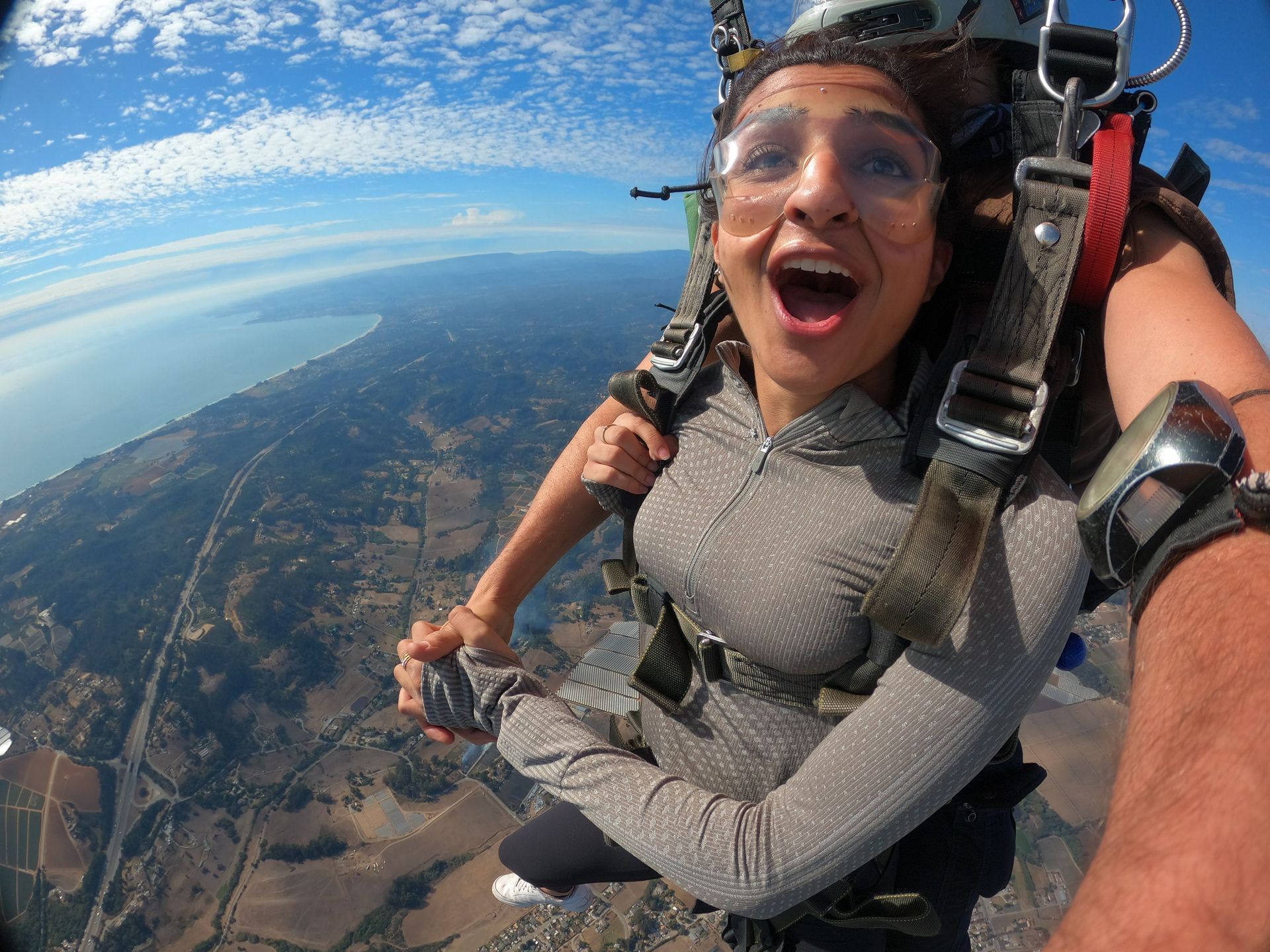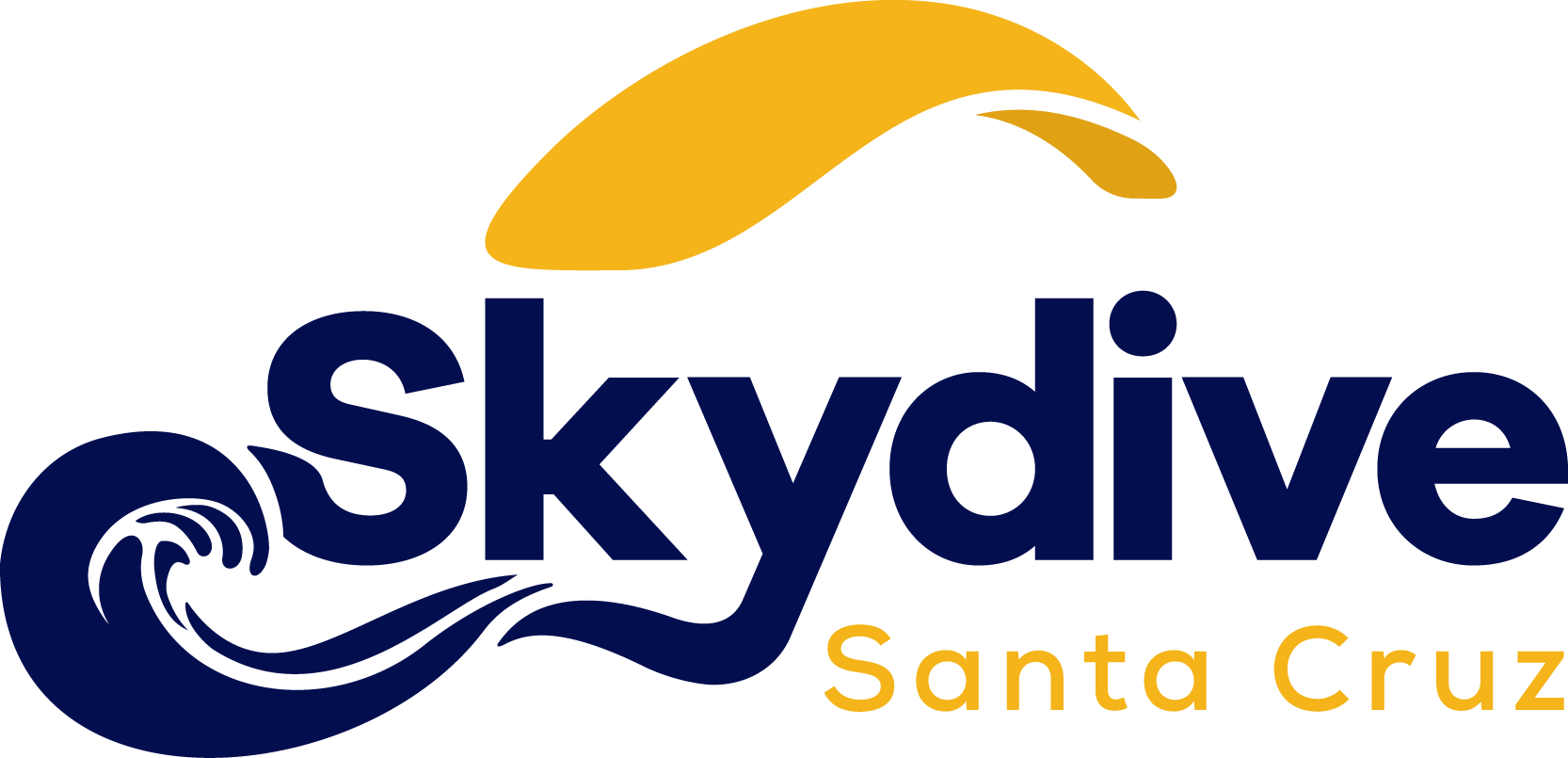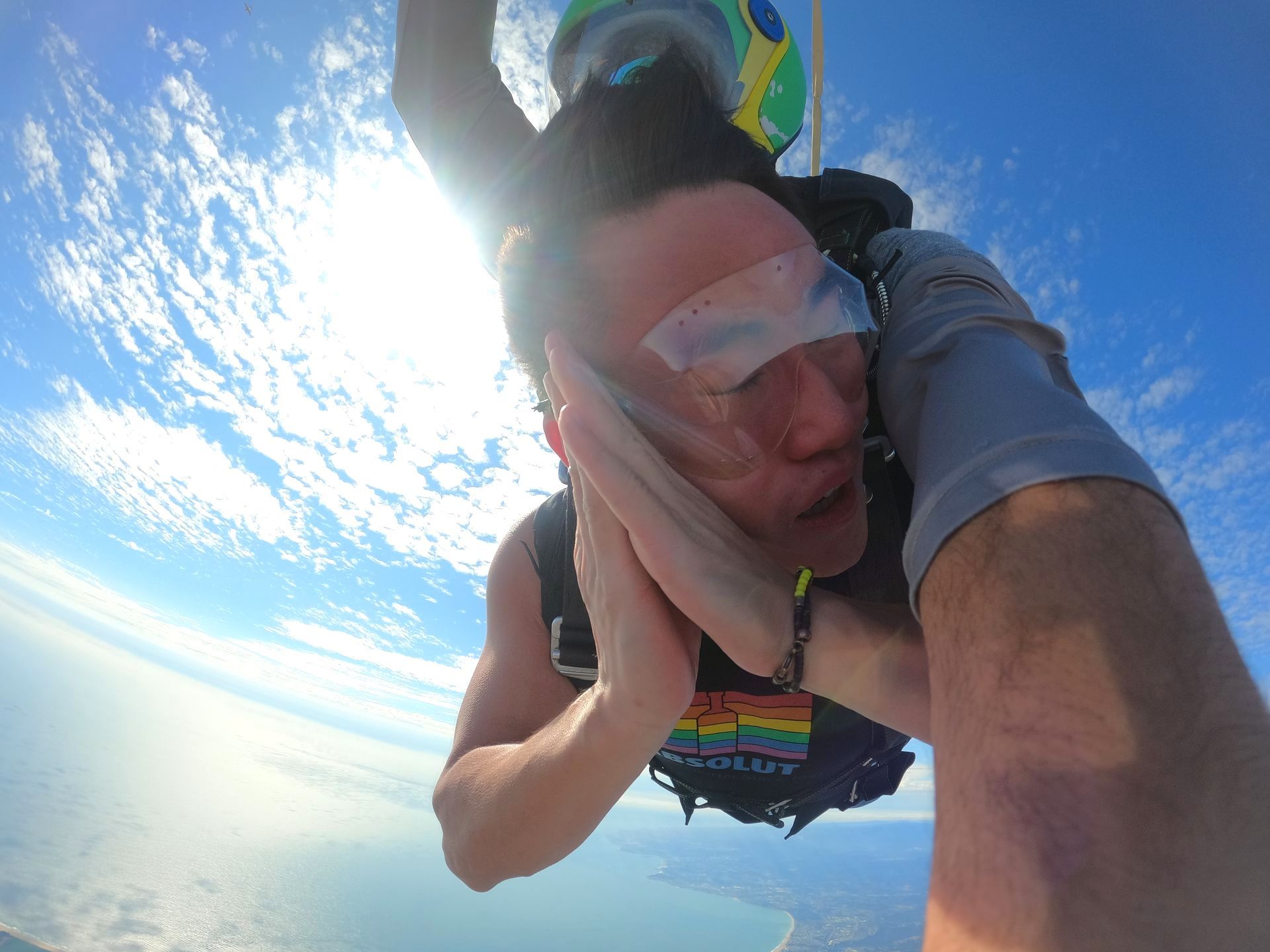Comparing Indoor Skydiving vs Real Skydiving
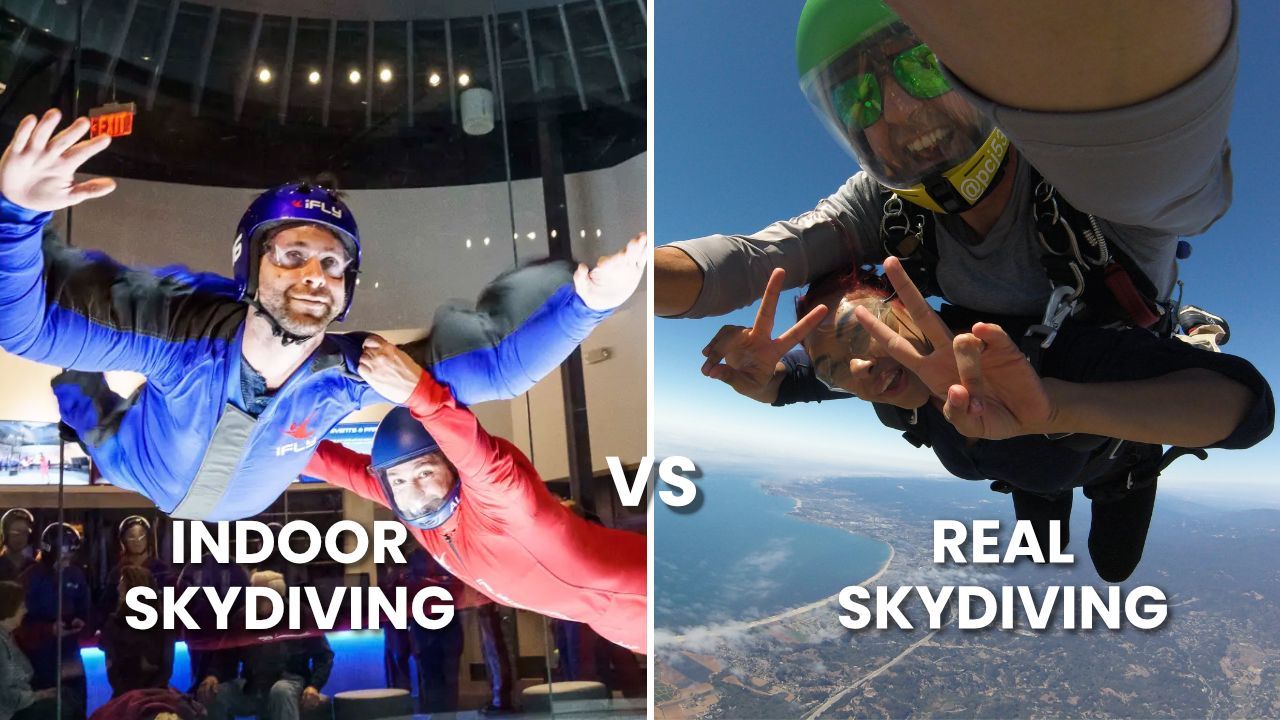
Indoor Skydiving Experience Key Takeaways:
- Simulated Freefall: Indoor skydiving provides a controlled experience that mimics the sensation of freefall, letting you hover and float in an enclosed vertical wind tunnel.
- Cost vs Experience: While less expensive than real skydiving, indoor skydiving covers only the freefall portion: no altitude, scenic views, or parachute flight are included.
- Beginner-Friendly Flight: Great for first-time flyers, kids, or anyone nervous about heights, giving a safe introduction to body control and aerial maneuvers.
- Instructor-Guided Spins: While first flights don’t include solo flips, you can experience spins or 360-degree rotations with an instructor holding and guiding you.
- Short but Fun Flights: Individual flights typically last 30 to 60 seconds, with packages often including multiple flights for fun.
- Training Tool for Experts: Indoor skydiving is used by experienced skydivers to practice body positions, maintain muscle memory, or try new maneuvers in an environment that allows multiple repetitions in a short time span.
- Contained, Weather-Proof Adventure: Wind tunnels operate in all weather, day or night, providing a convenient way to experience flying sensations.
- Safe but Not Risk-Free: Indoor skydiving is highly managed, but minor injuries can happen and there are risks, but it is generally regarded as a very safe activity.
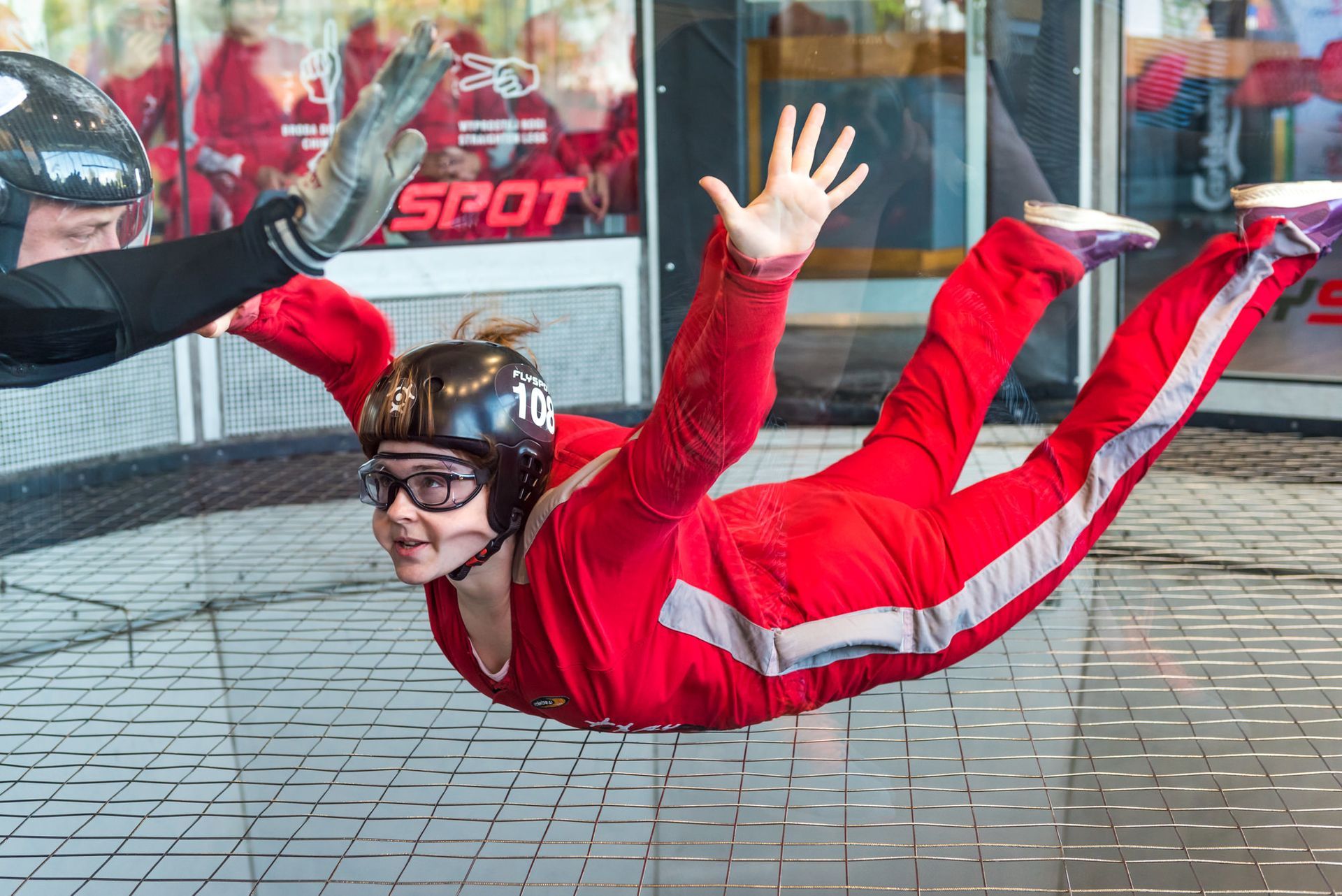
Indoor skydiving has been popping up across the country, offering a tempting approximation of what it might feel like to defy gravity without actually leaving the ground. But let us be absolutely clear, “indoor skydiving” is most certainly not skydiving.
Skydiving is the act of exiting from an aircraft while in motion at altitudes typically ranging from 4000-18000 feet above the ground, performing acrobatic maneuvers in freefall, and then landing gracefully, or at least semi-gracefully, by parachute. Indoor skydiving, on the other hand, is what happens when engineers and a strong breeze conspire to let you hover in a vertical wind tunnel while wearing a helmet that makes you look like an off-duty Power Ranger waiting for the call.
Indoor skydiving has no plane, no real freefall, and no parachute landing. It lacks all three critical ingredients that make skydiving…well, skydiving. It’s like calling karaoke a rock concert.
That said, it is fun. It is unique. It is the sort of thing that makes expert skydivers nod approvingly while thinking, “yes, this will make me slightly better at throwing myself out of a plane on future jumps”. It is, to be very clear, a simulation. It is a freefall simulation, which is thrilling in its own confined, tunnel-ish way.
Tunnel flying is a thrilling way to simulate freefall, but can it really compete with jumping out of a perfectly good airplane over the Pacific, flying through the sky toward the ocean at a speed that makes your brain reconsider your life choices. That is exactly where true adventure begins.
The debate, as one might imagine, is not entirely fair.
What is Indoor Skydiving?
At its core, an indoor skydiving experience is a simulated freefall activity within a vertical wind tunnel. Yes, a tunnel. Not a plane, not a vast expanse of open sky overlooking Californian beaches. Just a very determined column of air, contained within a circular tube roughly 12 to 18 feet across, within an enclosed chamber that smells faintly of ambition and overpriced helmet hair.
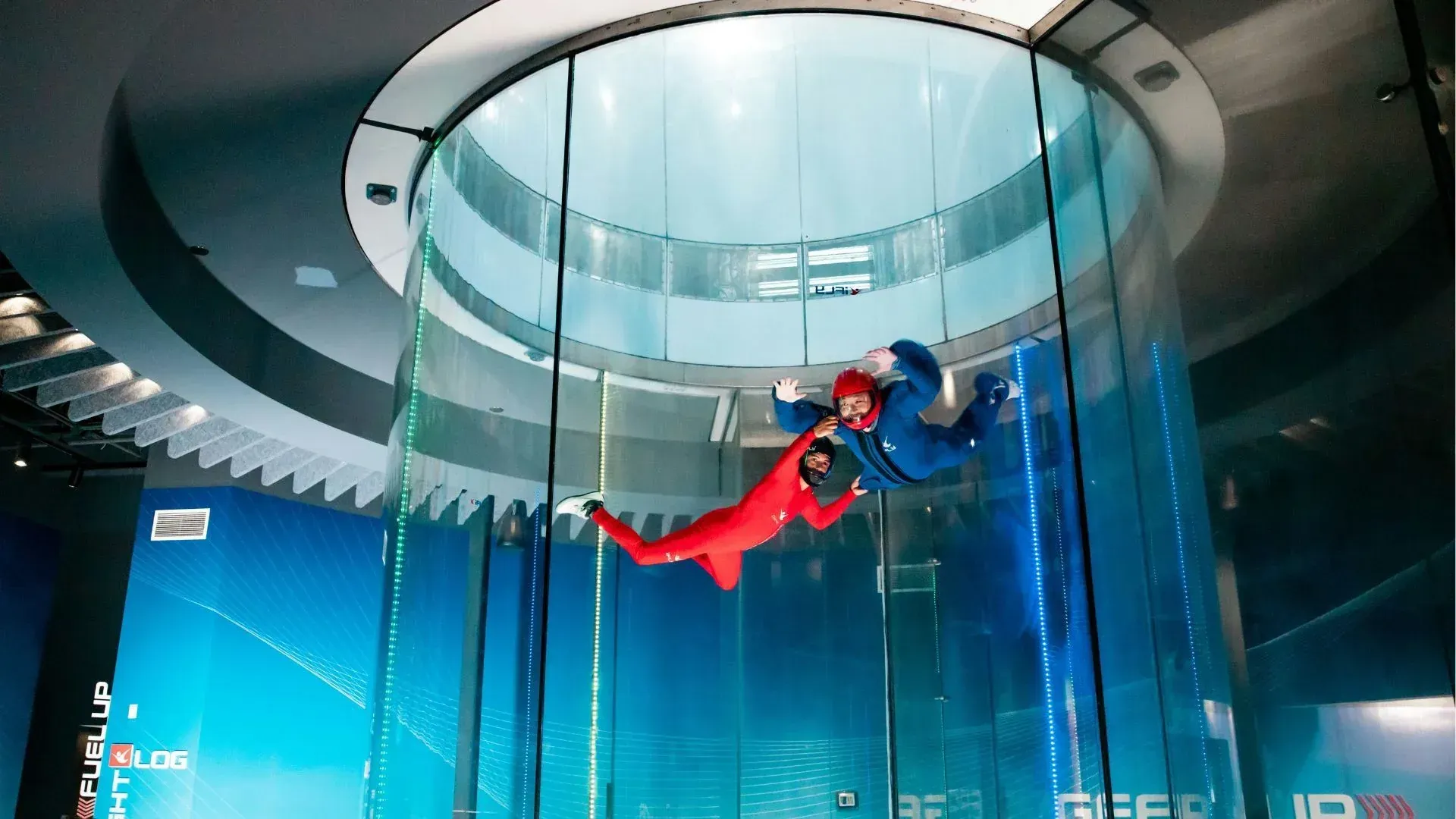
Some larger wind tunnels reach a height of up to 50 feet. First time flyers only rise a few feet above the metal safety net, which keeps you from falling onto airfoil shaped equipment that aids in the recirculation of airflow. That’s comforting to know when you are questioning how well your Superman impersonation is going. Air is pushed upward at a Category 1 rated hurricane, enough to hold your body aloft so you can hover, float and turn. Fundamentally, it remains an air bound approximation of the real thing.
Why Real Skydiving Beats Indoor Skydiving
Outdoor skydiving is the real deal. It’s the full cinematic experience that wind tunnels can only dream of replicating. It begins with the airplane ride, an odd mixture of anticipation, nervous energy, and the faint hum of engines conspiring to remind you that gravity is waiting.
At Skydive Santa Cruz, that means ocean views that could make even the most jaded travel influencer pause mid-selfie. The coastline stretches out like a living postcard, with crashing waves, towering dunes, the smell of salty air, and a cool breeze against your face.
You can feel the wind speed, orientation changes, the pure freedom of moving through space in a way that no indoor skydiving wind tunnel can hope to reproduce. On a first tandem jump, flips and maneuvers are possible and encouraged.
It is a full-body, sensory thrill. Temperature shifts, the smell of the ocean, the sensation of true altitude. A skydiving experience is a story that will stick with you, not a neatly contained simulation. Nobody makes movies about tunnel flying, but movies are made about people hurling themselves from planes because there is nothing quite like it.
True skydiving delivers speed, altitude, and accomplishment all at once. First-timers and seasoned jumpers leave with the sense of having done something remarkable. A tandem jump is more than just an activity; it is a bucket-list moment, a memory that will live in your heart and mind long after you touch down after parachute descent.
In short, skydiving is not just the real thing, it is the thing you never forget, the thing that changes your perspective, and the thing that makes indoor tunnels feel, well, lacking that je ne sais quoi.
Indoor Skydiving Benefits
Wind tunnel flying has its place, mostly when jumping out of a plane is, for one reason or another, not an option. The indoor skydiving experience is weather-proof, sometimes open at night, and typically available to younger individuals.
For beginners, kids, or anyone nervous about heights, it provides a taste of flying that is manageable and enjoyable. It is a gateway of sorts as an introduction to the motions, the sensation, and the vibes of pretending for a few moments that you’ve unlocked the superpower of flight.
It is a convenient training tool for expert skydivers who want to practice body positions and basic maneuvers without limits of daylight, parachute packing, and weather holds.
Yet, for its merits, indoor skydiving remains fundamentally limited. A contained approximation. A clever illusion. It gives only a hint of freefall, a shadow of true flight, and none of the scale, emotion, or perspective that comes with bailing out of an airplane door with just mental fortitude and sophisticated nylon. Think of it as the skydive appetizer: fun, contained, and worth trying, but the main course is still waiting thousands of feet above the ocean.
Indoor Skydiving Safety vs Skydiving Safety
Short answer: both are safe. People often assume indoor skydiving is guaranteed safety incarnate and outdoor skydiving is a reckless freefall into the void. The reality is more boring and more comforting. Both activities have risks. Both have safety systems and trained staff. Both see injuries only rarely, and injuries to first timers are even rarer. But they are not apples to apples, because the tunnel only stands in for the freefall portion of a jump while an actual skydive includes aircraft time, freefall, parachute flight and landing.
Is Indoor Skydiving Safer Than Skydiving?
Both indoor and outdoor skydiving are, to the mild disappointment of daredevils everywhere, very safe. For tandem students, skydiving is one of the safest adventure sports, with incident rates so low one National Library of Medicine study calls the risk ‘overstated’.
In the United States, skydiving has the United States Parachute Association (USPA), a national body that diligently collects and publishes safety data every year. Skydive Santa Cruz is a member organization of the USPA. Indoor vertical wind tunnels, on the other hand, have no central governing body. If you want numbers, you end up sifting through the occasional medical journal describing a dislocated shoulder or a bump against the wall, which is not quite the same as a national database.
For tandem skydivers, the first-timers strapped to a highly trained and certified instructor, skydiving is among the safest adventure sports. A detailed study on skydiving safety found on the National Library of Medicine noted that skydiving injuries was so low that it “puts the assessment of skydiving as a high-risk sport into perspective.”
Modern parachute systems are built with redundancies, backups, and automatic devices that open the parachute if they are unable to do so. Incidents are rare, and serious ones rarer still. Most reported mishaps in the sport happen not in freefall at all, but during landings by solo jumpers pushing their limits.
Indoor tunnels come with their own brand of risks like most activities. The wind is carefully controlled, but beginners can still bang an elbow on the glass, torque a shoulder, or a missed spot by the instructor could lead to a less-than-graceful introduction to the metal net. Injuries for the first timers are rare, and not dangerous in the catastrophic sense, but neither is it the risk-free hamster-ball experience many assume. There is a reason you sign a waiver there.
So, is indoor skydiving safer than skydiving? It’s not a clean comparison. The tunnel only simulates freefall, and if you compare that portion alone, skydiving probably comes out looking safer. Incidents almost never happen in skydiving freefall. Where skydiving differs is that it continues for several more minutes under parachute. The parachute component could be five times longer than the freefall in both skydiving and in the tunnel. It introduces entirely different sensations and, yes, risks.
The practical takeaway: both activities are remarkably safe for beginners, but only one ends with you floating above California beaches with Monterey Bay spread out below like nature’s IMAX screen.
Indoor Skydiving San Francisco Costs (and Bay Area Options)
Indoor skydiving in SF Bay Area typically ranges from $105 to $149 for a two-flight package.
When wind tunnels position themselves as “cheaper than skydiving,” they’re not entirely wrong but that’s comparing apples to basketballs. What you get in an enclosed wind chamber is a clever, contained slice of the skydiving experience.
Skydiving includes parts of the experience that tunnels don’t including the airplane ride, altitude, views, parachute flight, landing, and in the case of Skydive Santa Cruz, a sweeping view of the Pacific that travel photographers would sell their tripods to capture.
How Much Does Tandem Skydiving Cost in Santa Cruz?
At Skydive Santa Cruz, a tandem jump is $239 per person. That price includes the scenic airplane ride (typically a 20-min scenic flight over Santa Cruz would cost about $200-$250 itself), the jump from altitude, the full freefall, and several minutes of parachute flight near the ocean. You’re buying a complete experience, from takeoff to soft landing on the California coast.
Indoor Skydiving vs Skydiving Experience Comparison
| Indoor Skydiving San Francisco | Tandem Skydive Santa Cruz | |
|---|---|---|
| Price | $120 - $140 | $239 |
| Activity Duration | 1-2 minutes | ~6 min (30-40 secs freefall) & ~5 min parachute flight |
| Scenic Ocean Flight | ❌ | ~20 min over Santa Cruz beaches |
| Freefall Experience | 2 x 60 second simulated freefall flights | ~30 seconds, 120 mph freefall |
| Views | ❌ | Santa Cruz Beaches, Boardwalk, Dunes, Santa Cuz Mountains, Monterey Bay, Monterey, San Jose |
| Parachute Flight | ❌ | 5-6 min parachute descent |
| Parachute Landing | ❌ | ✅ |
Why the Indoor Skydiving Price Looks Smaller, But Isn’t the Whole Picture
You pay for full services with skydiving: The price covers the airplane, fuel, pilot, scenic views, staff, parachute gear, the time under parachute, and the descent. For many, that’s 5-6 minutes of Zen-like descent after the freefall and views. You can’t replicate that in a wind tunnel.
Comparing experience value: At Skydive Santa Cruz, your price includes natural beauty (ocean, beaches, dunes, mountains), airplane ride, and the full skydive experience. The parachuting descent is a completely different experience than freefall, making it seem like two completely different activities. For someone paying $239, the value is not just in the freefall but in the whole spectacle of which you get only in outdoor skydiving.
The Hidden Costs of Indoor Skydiving
The tunnel price is also not the final price. Some Indoor skydive operators have turned previously standard included features into add-ons. Want the instructor to grab hold of you and rocket you up and down the chamber? It’s the most exciting part of the whole session. Well, that’s an upgrade. Prefer a full-face helmet instead of the open-face version Tony Hawk retired before his first video game dropped? Also, an upgrade.
By contrast, skydiving includes all the good bits. At Skydive Santa Cruz, flips and spins are included on your first skydive (only if you want). The parachute ride comes standard. The ocean view isn’t behind a paywall. You get the whole adventure, start to finish.
Value Comparison of Indoor Skydiving vs Skydiving: Beyond the Dollar
Skydiving is more expensive because it includes more: the airplane, the altitude, the freefall, the parachute flight, and the kind of memory you’ll retell for years. Indoor skydiving, by design, only simulates one sliver of that. Like a golf simulator, they’re fun, useful training tools, and great for a rainy afternoon. But if you’re weighing what to do with your hard-earned dollars, the better value lies thousands of feet above Santa Cruz, with a new life perspective and new visual of the central California coastline.
Skydiving vs Indoor Skydiving FAQs
1. Does indoor skydiving feel like real skydiving?
Indoor skydiving simulates freefall: wind in your face, floating and hovering in a vertical wind tunnel. An indoor skydiving experience is fun and a great introduction to body flight. Real skydiving adds the airplane ride, real freefall, additional opportunities for freefall maneuvers, parachute flight, incredible views of the California coastline, and all the other intangibles: bragging rights, a sense of accomplishment and the emotional and neurochemical rollercoaster from nervousness to blissfulness to legend. That’s something no tunnel can replicate.
2. Does indoor skydiving count as skydiving?
Not really. Indoor skydiving is a simulation. You do not jump from an airplane, freefall under gravity, or land with a parachute. It’s a contained simulated freefall experience, excellent for training or trying flight safely, but it is not the full skydiving adventure.
3. Who should not do indoor skydiving?
People over weight limits (usually 260 pounds), or with back, neck, or shoulder injuries, or severe claustrophobia should avoid tunnel flying. Those with serious heart conditions should consult the facility first.
4. Who should do indoor skydiving?
Indoor skydiving is ideal for beginners, kids, nervous flyers, and experienced skydivers practicing new maneuvers. Groups with limited scheduling flexibility or who want a weather-proof adventure also benefit. The indoor skydiving experience is the closest approximation of freefall relative to real skydiving.
5. How long is one indoor skydiving flight?
First-time flyers typically float 30–60 seconds per flight. Packages often include multiple flights, totaling 1–2 minutes of simulated freefall, enough for a memorable indoor skydiving experience.
6. Can you do flips during your first wind tunnel flight?
No. First-time flyers experience basic hovering, spinning, and instructor-guided maneuvers. Real skydiving offers far more: backflips on exit, freefall spins, and spirals and parachute acrobatics.
7. How much does indoor skydiving cost in San Francisco?
A two-flight package typically costs $120–$140. Prices vary when purchased via third-party vendors. Add-ons like instructor-led high flights or specialized helmets may increase the cost.
8. How much is indoor skydiving in San Jose?
There are no vertical wind tunnels in San Jose. The nearest facility is iFLY San Francisco Bay, located in Union City, approximately 25 miles from downtown San Jose.
9. Is indoor skydiving safe?
Yes. Indoor skydiving has trained staff, controlled airflow, protective gear, and safety protocols. Injuries are uncommon but can occur, typically minor musculoskeletal incidents during advanced maneuvers. It’s a safe simulated freefall experience, but not entirely risk-free.
10. What are the risks of indoor skydiving?
Risks include shoulder strains, collisions, or nerve irritation from improper positions. Safety limits, instructor guidance, and progression from assisted to solo flights reduce risk. Compared to real skydiving, the tunnel isolates only the freefall portion, so risk is limited but different.
11. Indoor skydiving vs real skydiving: Which is better?
For a fun, beginner-friendly, weather-proof experience, indoor skydiving is a fun activity. For a full sensory adventure including the airplane ride, real freefall, parachute flight, and views of the iconic Monterey California coastline, real skydiving offers unmatched thrills and lasting memories.
Ready to try real skydiving?
Indoor skydiving is fun, but it is training wheels. The real adventure is stepping into a parachute harness, climbing thousands of feet into the sky, and bailing out of an airplane into open air above the Pacific Ocean. At Skydive Santa Cruz, you are not simulating freefall, you are living it. Book your tandem skydive today and trade the tunnel for the full story.
